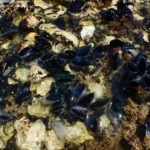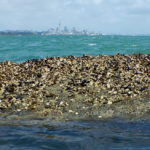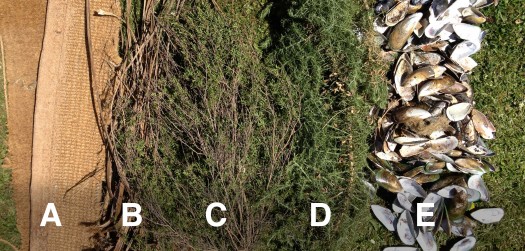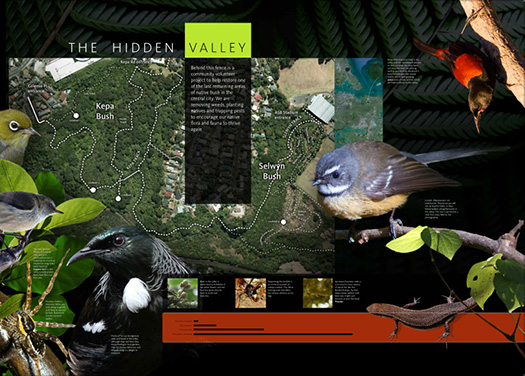So ugly, they look worse at low tide… sea snot. Amazing how dense the beds are given its only just been introduced to New Zealand. I guess we better get used to them.
Spat
An ASAP experiment designed to generate hunches not scientific facts.
This experiment is designed to answer:
- Is settlement attempted on filamentous structures around the Bastion reef?
- What kind of organic substrates do spat like?
- What size mesh best protects the spat from predators?
- Does raising the bed help settlement? (Presumably from sediment effects).
- How many holes can I put in my wetsuit in one outing?
Where
Bastion reef is ideal location because divers do not go there. The mussel population does not look to be harvested presumably because it is too close to city runoff. There are blue mussels present but there numbers are relativly low. It is also easily accessed by Kayak so I will not have to scratch anyones nice boat.
Design
Three cages 300x300x900mm (joined for stability) enclose 3 mixed bird netting wrapped bundels of test substrate at two different levels. The top level bundels (above 200mm) should be wire tied to the inside cage lids and should be at least Xmm above the sediment. The 3 mesh sizes test spotty predation the two heights test sediment effects.
“A 40mm spotty could eat a lot of spat”
- 5mm x 5mm plastic mesh. A 7mm tall spotty could get through on an angle.
- 12mm x 12mm square mesh. A 16mm tall spotty could get through on an angle.
- 40mm x 40mm square mesh. A 52mm tall spotty could get through on an angle.
A cow tag with a note about the experiment with my contact details was attached for curious divers (or if it gets washed up on the beach). Each bundle was clearly labled (cow tags) just incase they get mixed up.
Bricks(2) will be added inside the cages to compensate for the floatation provided by the plywood. Four large concrete block anchors attached by rope to the plywood and 20mm pegs should hold the cage still.
Materials:
- Galvanised 18G 1.25mm wire
- Countersunk stainless steel 316 grade 10g x 50mm decking screws
- Buttoned needle point 8g 13mm galvanised screws
- 23cm galvanised ground staples
- Square welded wire netting galvanised 12mm
- Square welded wire netting galvanised 25mm
- PE Gutter Guard 5mm
- 12mm CD Grade treated plywood
- 24mm treated plywood
- My wifes old metal shelving
- Shelves from my mother in laws old sun house
- Some staples and Nylon
- 4 concrete blocks
Settlement substrates
A. Coconut fibre (a door matt, welded with latex)
B. Cabbage tree leaves (long dead)
C. Manuka (fresh)
D. Gorse (seeding at collection time)
E. Mussel shell (fresh and old)

Substrates to try in the future:
- Manila rope
- Filamentous seaweed
- Feathers
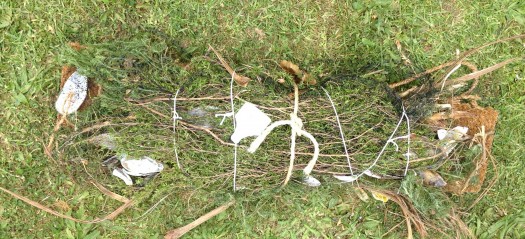
Each bundle was labeled:
BH BL SH SL CH CL
B=big S=small C=control H=high L=low
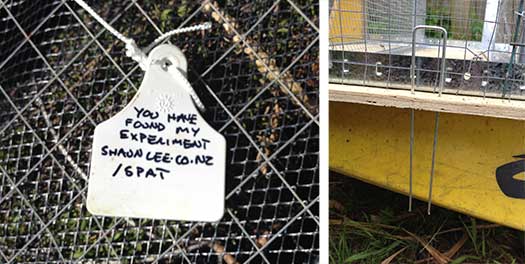
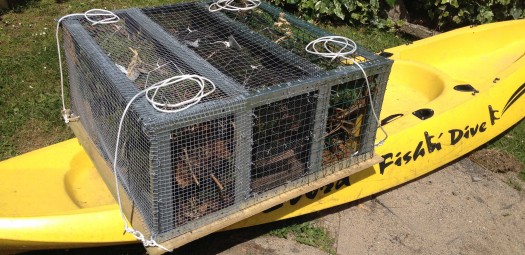
Deployed: 13 Dec 2014
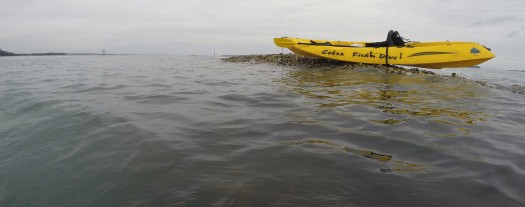 Just off the edge of the reef, on the southern side.
Just off the edge of the reef, on the southern side.
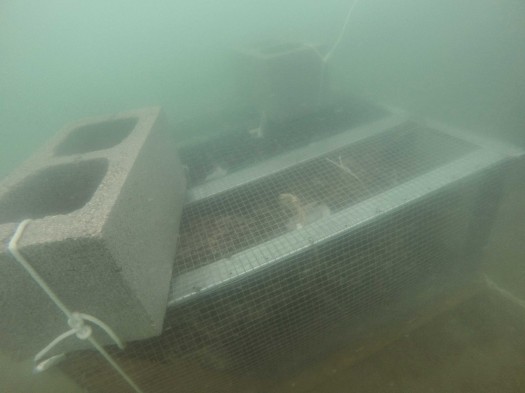
No holes in my wetsuit! (yet)
When
“Most spawning occurs in late spring to early autumn, but larvae can be present all year. Sexual maturity has been observed in some populations to begin from 27mm shell length, with most individuals sexually mature by 40mm shell length. Sexual maturity is reached in the first year, and females can produce up to 100 million eggs per season. Fertilisation is largely dependent on the proximity of adults.”
– http://fs.fish.govt.nz/Doc/5449/GLM_FINAL%2008.pdf.ashx
Monitoring
Check it once a month (take a brush to clean muck of cage surfaces), after 3 months or before the cage rusts too much the 6 bundels of substrate should be opened up on the beach. Each substrate photographed with a macro lense. Ideally it is then relocated somewhere with no mussels and no reef (for spotty to hide in) to see if transporting spat only to seed locations generates a mussel reef.
The photographs should be shown to marine scientist who can show me how identify spat. I can then count spat and work out spat per square cm or something.
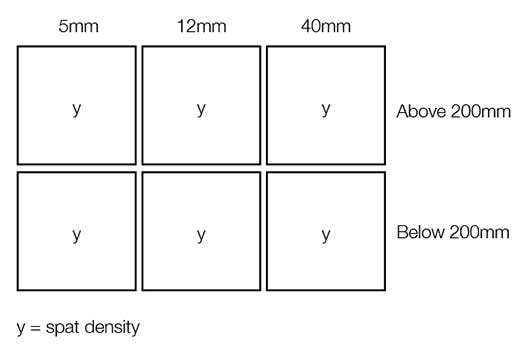
Prediction/ Prevention
- It will get washed away/ use bricks, peg it down & design it so wave action is likely to make it spin.
- It will sink into the mud/ wooden floor.
- It will get damaged by people/ add a note saying its an experiment and give them a URL.
- It will rust to bits/ check on it every month.
- Spotty still eat all the spat/ I have used the smallest mesh possible.
- Nothing/ leave it untill we have spat or it rusts away?
UPDATE: 14 Jan 2015
No movement of the cage. Lots of marine growth and sediment, several small spotty (I didn’t see any on installation). Cage cleaned off (a bit). I took this video pre-clean.
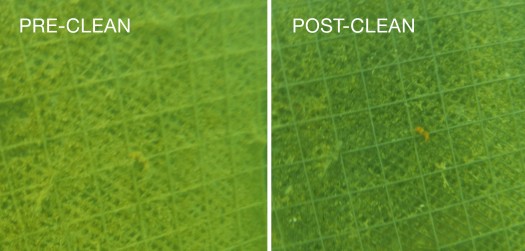
UPDATE: 14 Feb 2015
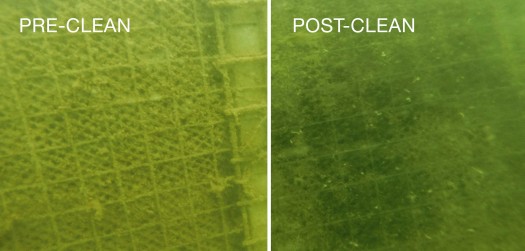
RESULTS: 05 March 2015
Cages opened, substrates well documented with macro lens. Not enough spat settlement for useful substrate observations.
OBSERVATIONS
Coir and cabbage tree leaves had the most suspect spat (I could not confirm without a microscope). Use a microscope to look for spat as you need to look at anything suspect from more than one angle.
The manuaka had the most hydroids (or fine branching structures) growing on it. This is significant as Hydroids are know settlement structures.
Several starfish including 11 arms in the control cage. Shrimps and all sorts of crabs but mostly half crabs and decorator crabs ,all sorts of young shells from whelks to turbans. Lots of other marine growth and invertebrates I could not identify.
Surprising lack of holes in my wetsuit! The hardest thing was lifting the bundles in trash bags back onto the boat by myself.
RECOMENDATIONS
The lack of settlement in all cages suggests spotty are not the main problem at this site. A cage placed higher up in the exposed tidal area would be interesting, as there must be settlement near the existing adult mussels (2 meters above where I had my cages).
UPDATE: Nov 2016
Worth noting nearly 2 years later that parts of the cages are still intact. There are beautiful hyrdroids and finger sponges growing on them and some not so welcome invasive clubbed tunicates. I noticed Mediterranean fanworm nearby and the entire green-lipped mussel reef has been devastated by human harvesting.
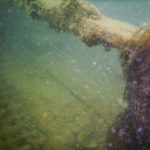
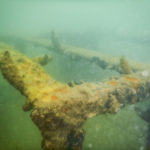
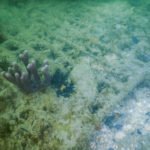
Things Aucklanders can do to help the Hauraki Gulf
Inspired by some recent conversations, I put together this list (in no particular order).
Things Aucklanders can do to help the Hauraki Gulf
- Have fun and do good with Voluntours
- Join an event in your area ecoevents.org.nz
- Look for and photograph invasive pests and post them here inaturalist.nz
- Survey your favourite spots
- Do restoration at your favourite spot naturespace.org.nz
- Find and submit plastic pellets pelletwatch.org
- Join BirdsNZ (the Ornithological Society of NZ) contribute to bird counting surveys and beach patrols osnz.org.nz
- Join Sustainable Coastlines and clean up a beach sustainablecoastlines.org
- Donate to Revive our Gulf reviveorgulf.co.nz
- Volunteer to cleanup rubbish with the Watercare Harbour Clean-Up Trust
- Report pollution
- Report poaching
- If you fish learn how to better release undersize fish. fishing.net.nz FYI, I don’t think we should kill our native fish.
- Explore and understand your waterway. Use these resources to improve it: waicare.org.nz and lawa.org.nz
- Join the conversation facebook.com/loveourgulf
Invertebrates
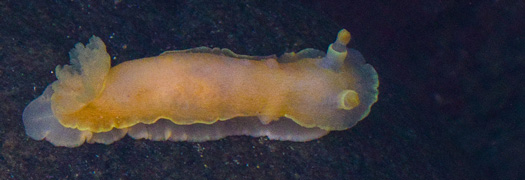
If I really care about biodiversity and 95% of described species are invertebrates then I am spending too much time with birds. Tho based on a talk I heard at the Zoological Society we don’t know how to look after them yet. The things we do to protect birds also help the insects (removing rodents and wasps).
State of the Hauraki Gulf Report 2014
I was absolutely stoked to work on this document. I have so much respect for the author and the team that put so much work into getting it right.
The Hidden Valley
I made this sign for a restoration project I am involved in. The Hidden Valley I am not sure if it will go ahead now as the Selwyn School Plans to bulldoze down the native bush and build a… carpark. I think its interesting they didn’t have money to remove this hazordus waste from their creek but do have millions to cover it with asphalt.
Pohutukawa
Cloning Pohutukawa makes sense if you’re breeding them for a specific purpose. In my case erosion control. I just want Pohutukawa that are great at holding onto cliffs.
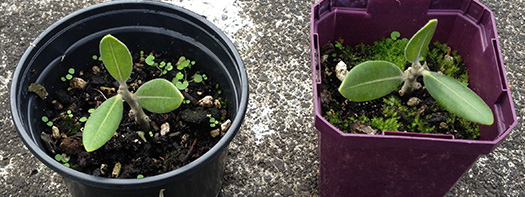
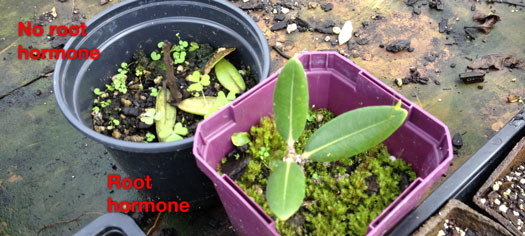
It’s growing slowly tho. While my seedlings are doing great.
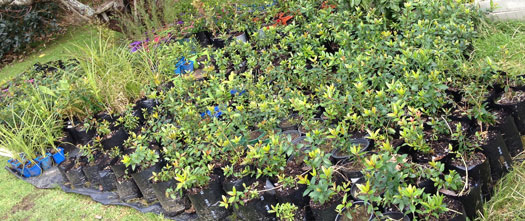
Guerilla Planting Winter 2014
Browns Island Mussel Reefs
Or what is left of them! Even the oysters are swamped by mud from the Tamaki estuary. Wikipedia needs updating:
“The flatter areas to the west have very large part submerged mussel beds which extent out 100 m (328 ft) from the shore preventing easy landing”.
Now the exposed rocks are surrounded by thick mud.
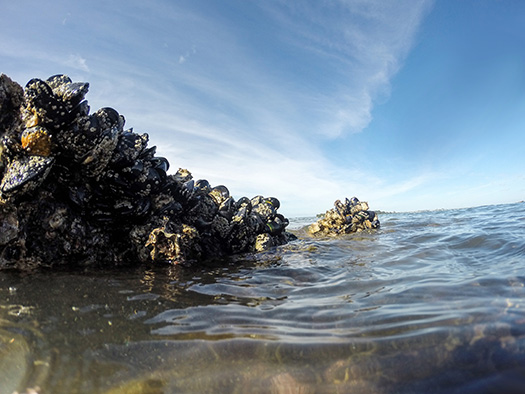
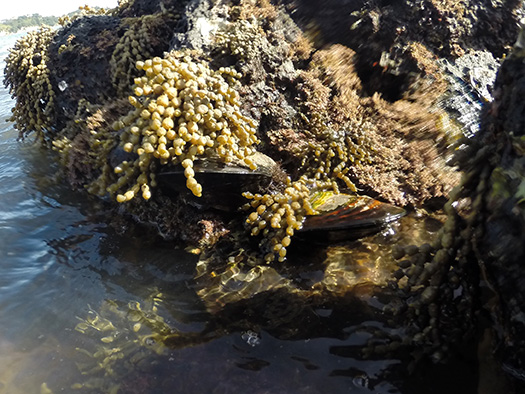
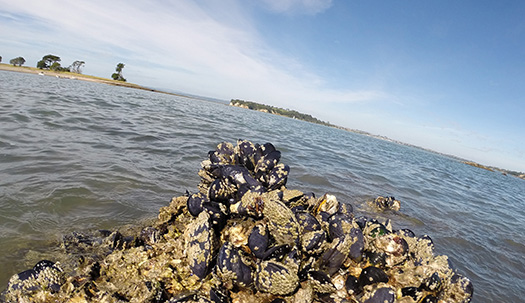
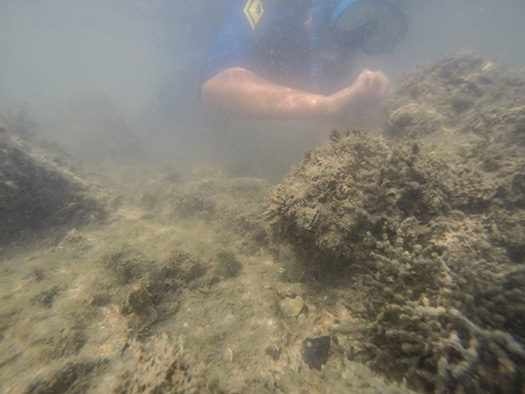
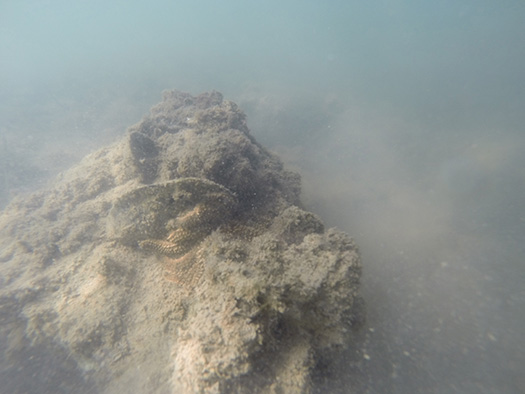
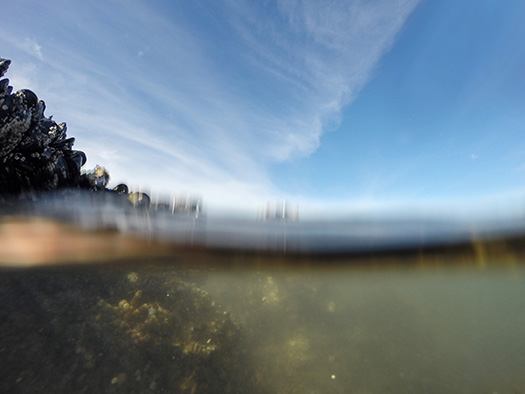
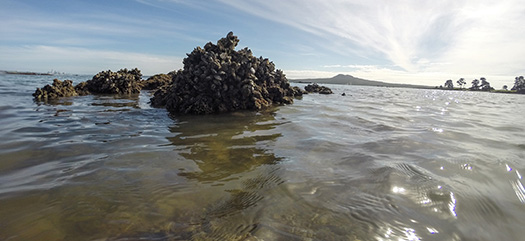
Mission Bay Mussel Reefs
I was very pleased to see so many green lipped mussels here. I thought it might be interesting to survey them as there size and abundance are good indicators for how a restored reef might manage this close to Auckland City.

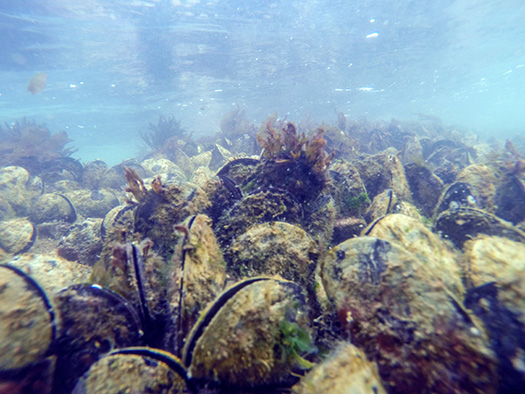
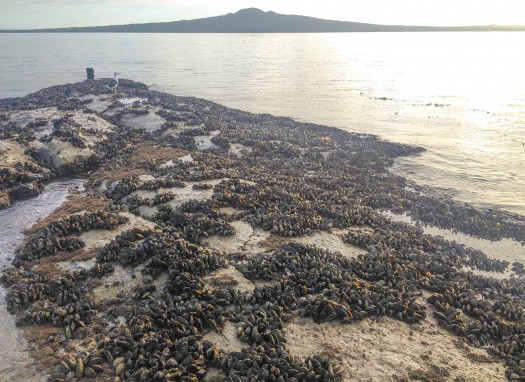
I saw the odd blue mussel, cats eye, kina, eleven arm, cushion star, asian tunicate and fanworm but green lipped mussels were by far the dominant species. There were only a few spots where oysters and barnacles were coming out on top.

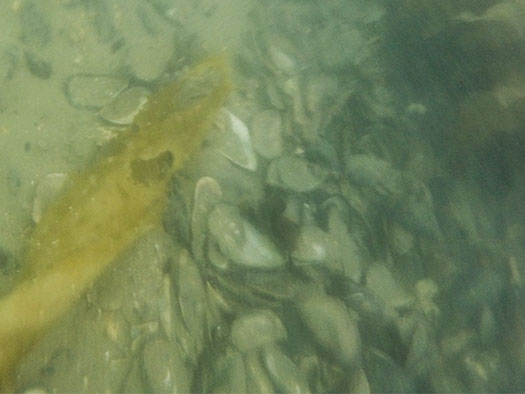
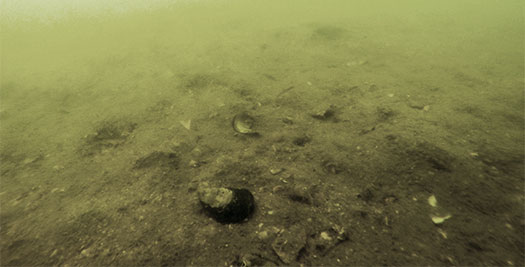



Most mussels were 7-8cm long. But there were a few around the 10cm mark. I think I was looking at two generations?
UPDATE: November 2016
The green lipped mussels have been heavily harvested. There are maybe 20-30 adults left across both reefs. Some juveniles amongst the remaining blue mussels. Rock oysters and blue mussels now the dominant species.
